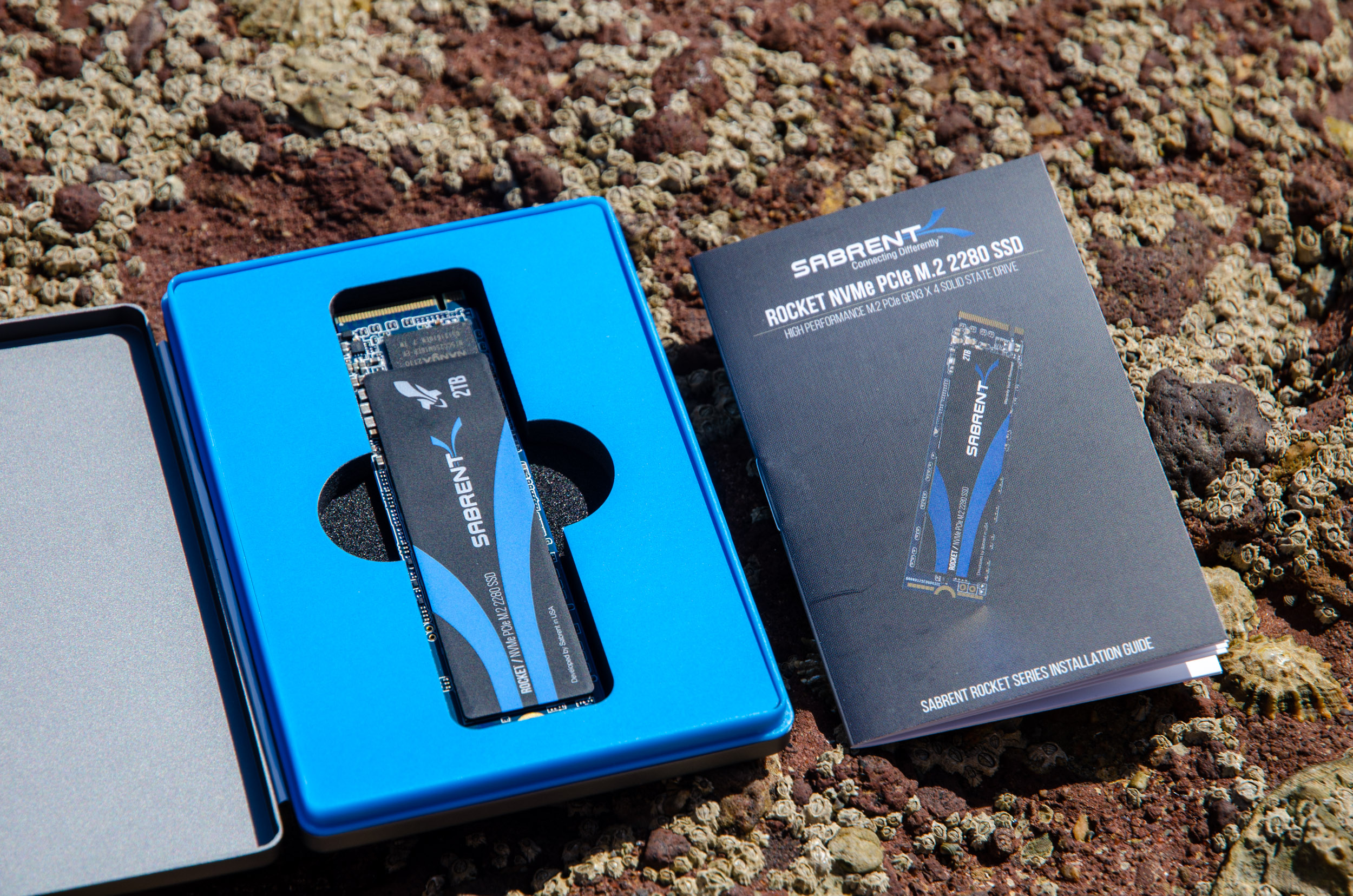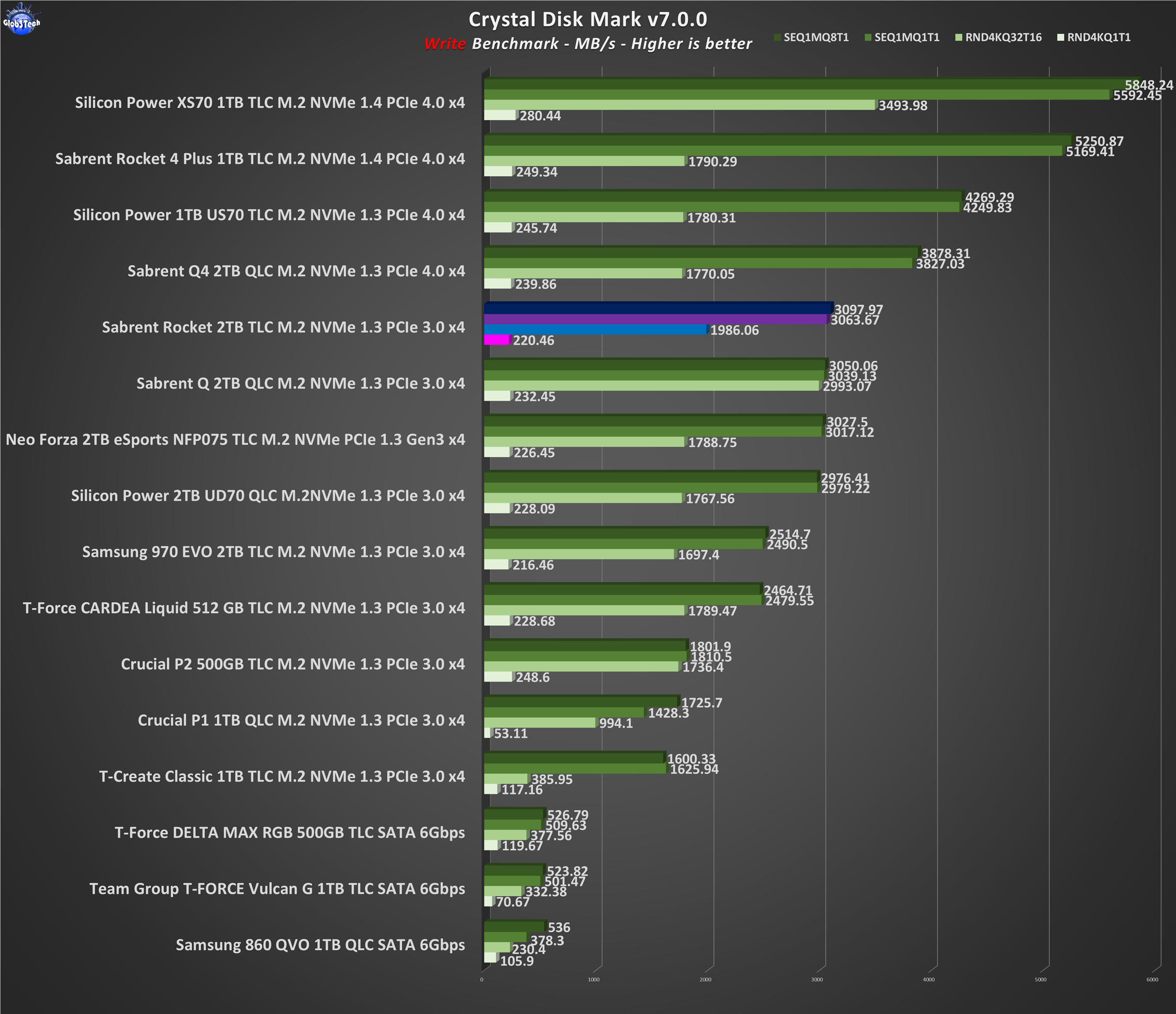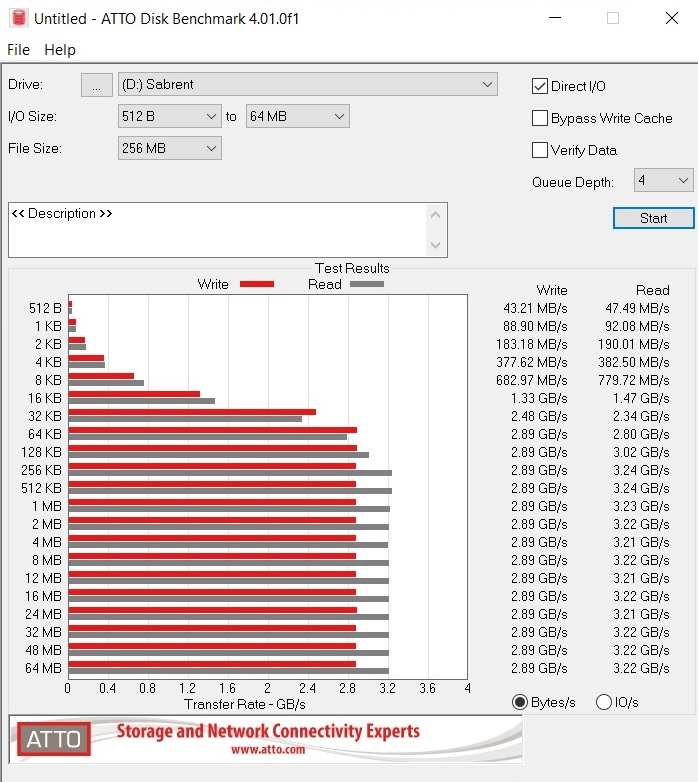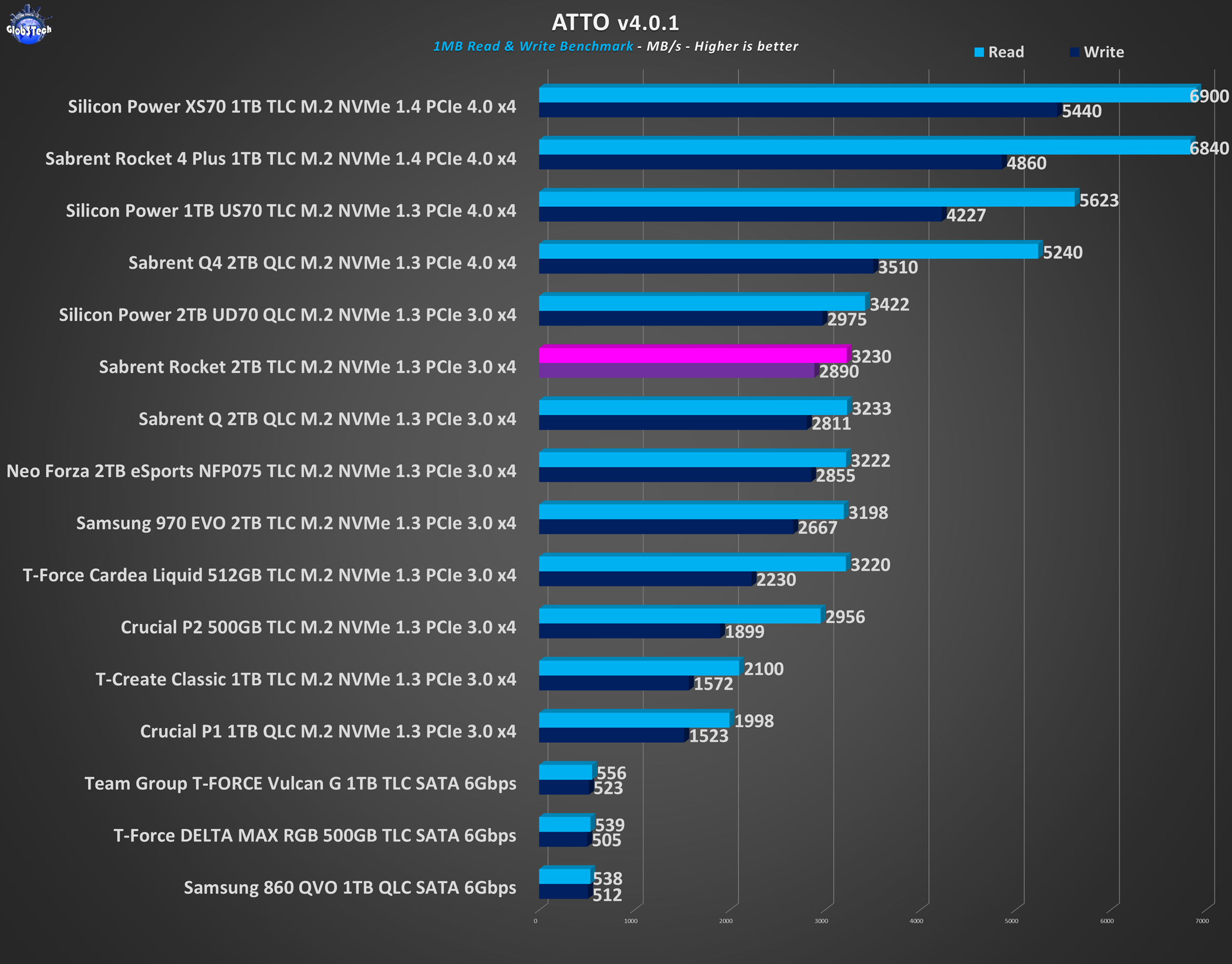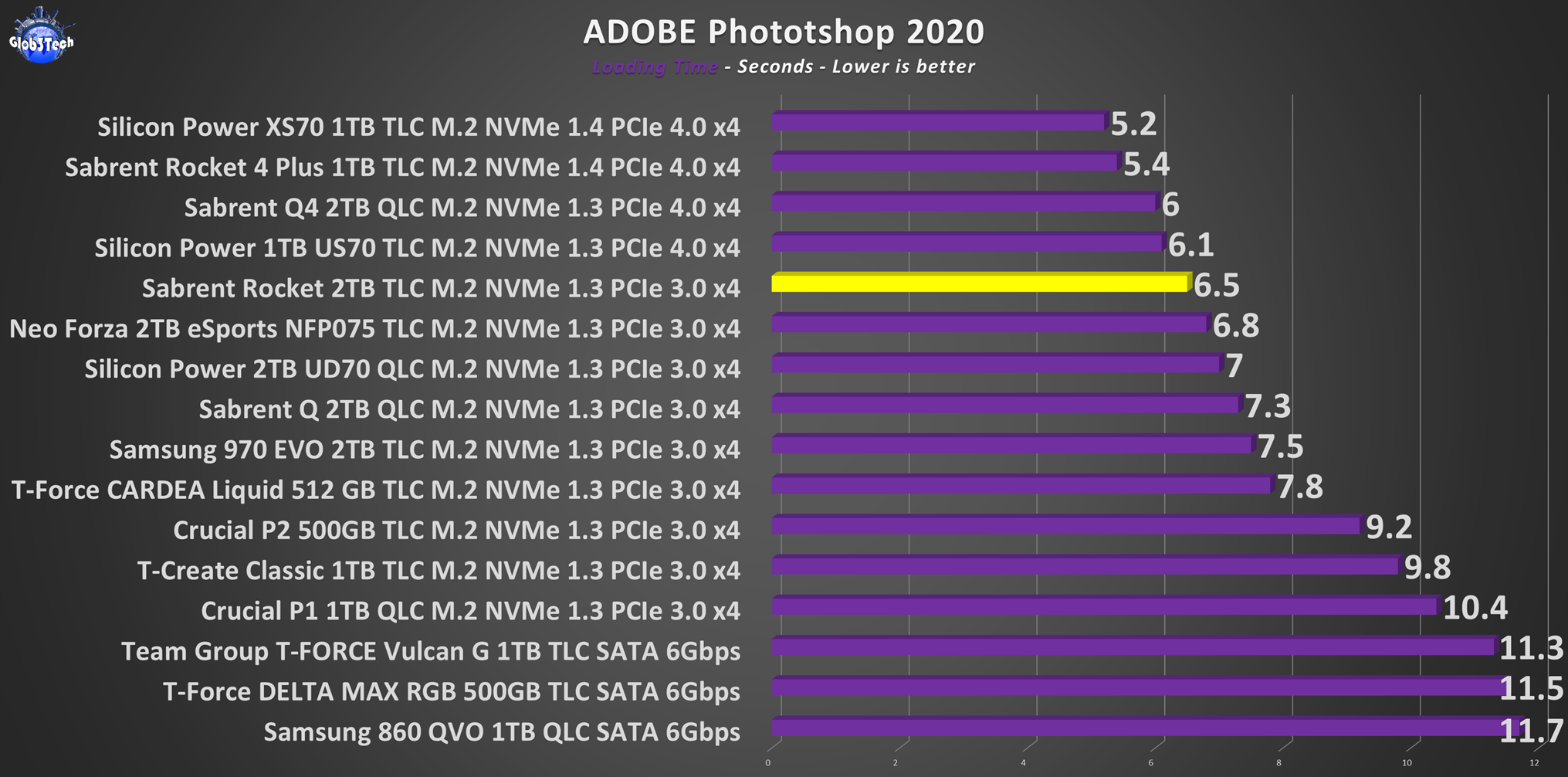
Today we are going to cover Sabrent’s TLC M.2 NVMe Gen3x4 range, a series that debuted in 2020 that still offers a great performance-to-value ratio.
Sabrent’s commitment is to offer the latest technology and the highest quality consumer electronic products at an affordable cost to everyone. Since its founding, Sabrent has consistently delivered to market a full line of computer peripherals and accessories that incorporate style, quality and the latest technologies available.
Prices and Availability
The standard ‘Rocket’ series has 5 capacity options to choose from and today we have the 2TB variant to test out.
*Update 18.08.2022 - Check the video review as well!*
Highlights and Specification
*Courtesy of their website.
The Sabrent 2TB ROCKET NVMe PCIe M.2 2280 Internal SSD High-Performance Solid State Drive (SB-ROCKET-2TB) delivers all the advantages of flash Disk technology with PCIe Gen3 x4 interface and it is fully compliant with the standard Next Generation Form Factor (NGFF), commonly known as M.2.
Based on Toshiba’s BiCS 3D TLC NAND Flash memory, its performance speeds can reach up to 3400 MB/s (read) and 2700 MB/s (write). Power Consumption is much lower than traditional hard drives, making it the best-embedded solution for new systems.
Features:
* M.2 PCIe 3.0 x4 interface. Up to 3,400/2,700 MB/s.
* NVMe 1.3 compliant with APST/ASPM/L1.2 power management support.
* Supports SMART, TRIM, and firmware updates with wide flash compatibility.
* Resiliency ensured through wear-leveling, bad block management, over-provisioning, ECC, RAID, etc.
* Software support including Acronis True Image and sector size formatting utility.
Specs:
* Model - SB-ROCKET-2TB
* Interface - PCIe 3.0 x4 NVMe 1.3
* Capacity - 2048 GB
* Maximum Read Speed - up to 3,400 MB/s
* Maximum Write Speed - up to 2,750 MB/s
* Controller - Phison E12S
* Flash - Toshiba BiCS 3D 96L TLC NAND
* DRAM cache - 512MB Nanya DDR3L 1866 MHz
* Dimensions - 0.87 x 0.15 x 3.15″ / 22 x 3.7 x 80 mm
* Weight - 0.2 oz
* Warranty - 5-year warranty (with registration / without, just one year)
* Endurance - Up to 3,470 TBW
Visual Inspection
All NVMe SSDs from Sabrent come shipped in a small but highly protected packaging thanks to its metal inner box. They should be sealed from factory while the branding is minimal and spot on.
The drive is nested in the middle of Sabrent’s signature metal box and you also get a quick user’s guide. Sabrent also includes a free copy of the Acronis True Image software with all of its drives.
The Sabrent Rocket 2TB drive feature a blue PCB which houses a Phison E12S memory controller, 8x 256MB BiCS 96L 3D NAND TLC flash chips from Toshiba (4 on each side) and one 512MB Nanya DDR3L DRAM cache chip. All of this is covered by a thin top sticker which is laminated with a thin copper foil underneath. This is to increase the total heat capacity to prevent thermal throttling in large file transfers.
With these specs, the Sabrent Rocket 2TB is rated up to 3400 MB/s reads and 2750 MB/s writes via its Gen3x4 PCI-e NVMe 1.3 interface.
Testing methodology
* Synthetic and real life big file transfer tests - a game folder of 108GB of mixed files and a single 15GB .mkv video file to test the burst speed and the SLC cache if present.
* All SSDs were secure-erased before our tests started
* Between tests, drives are left idle for 1 minute to allow them to flush and reorganise their internal data.
* Steps have been taken to ensure that the CPU’s power-saving features don’t interfere with any of our results. All of the CPU’s low-power states have been disabled.
* In order to minimise random variation, each of the real-life performance tests are run a few times with reboots in-between tests to reduce the impact of disk cache.
* (SATA SSDs only) Make sure you use a SATA 6Gbps capable motherboard and a matching cable to avoid bottle-necking. Then double check in the BIOS that you have the AHCI mode activated for another maximum performance tip.
* For the Gen4 x4 M.2s, you have to make sure you have a compatible motherboard that accepts and delivers the new bandwidth. Otherwise, it will work only in Gen3 x4 mode.
* All of the benchmarks for the internal drives were done with a 92mm side fan placed 2cm away and set at 60% RPM. Then the temperature scenarios and the heatsink were tested separately with an ambient temp of 24°C.
* For AMD users, make sure you update your motherboard chipset drivers from here.
Hardware used:
- CPU: AMD Ryzen 5 5600x
- CPU Cooling: SilentiumPC Navis F240 AIO
- Motherboard: ASUS ROG STRIX B550-i Gaming mITX @ BIOS 2803
- Boot SSD: Samung 970 PRO 1TB M.2 Gen3x4 MLC PCIe NVMe 1.3
- Video card: ASUS GTX 1080 STRIX A8G
- PSU: Corsair SF750 SFX Platinum
- Case: Phanteks Evolv Shift XT ARGB mITX
- Extra case fan 92 mm: Noctua NF-A9x14 HS-PWM.chromax.black.swap
Competition SSDs:
- Sabrent Rocket 4 Plus 1TB TLC M.2 PCIe NVMe 1.4 Gen4x4
- Samsung 970 PRO 1TB MLC M.2 PCIe NVMe 1.3 Gen3x4
- Samsung 970 EVO Plus 2TB TLC M.2 PCIe NVMe 1.3 Gen3x4
- Samsung 860 QVO 1TB QLC SATA 2.5″
- Crucial P1 M.2 1TB QLC PCIe NVMe 1.3 Gen3x4
- Crucial P2 M.2 500GB TLC PCIe NVMe 1.3 Gen3x4
- Team Group T-Force DELTA MAX RGB 500GB TLC SATA 2.5″
- Team Group T-Force Vulcan G 1TB TLC SATA 2.5″
- Team Group T-Force Cardea Liquid 512GB TLC PCIe NVMe 1.3 Gen3x4
- Team Group T-Create Classic 1TB TLC PCIe NVMe 1.3 Gen3x4
- Silicon Power 1TB XS70 TLC M.2 PCIe NVMe 1.4 Gen4x4
- Silicon Power 1TB US70 TLC M.2 PCIe NVMe 1.3 Gen4x4
- Silicon Power 2TB UD70 QLC M.2 PCIe NVMe 1.3 Gen3x4
- Silicon Power 1TB A80 TLC M.2 PCIe NVMe 1.3 Gen3x4
- Silicon Power 1TB A60 TLC M.2 PCIe NVMe 1.3 Gen3x4
- Neo Forza eSports NFP075 2TB TLC M.2 PCIe NVMe 1.3 Gen3x4
Software:
- Windows 10 Pro x64 Version 21H1
- HD Tune Pro v5.70
- ATTO v4.01
- Crystal Disk Mark v7.0.0
- HWMonitor v1.43
Testing, Results and Analysis
Also to mention that all Sabrent drives have their own proprietary control panel which you can download from Sabrent’s website and with its help you can check various specs and update the firmware if required.
HD Tune Pro – which is a hard disk / SSD utility with many functions. It can be used to measure the drive’s performance, scan for errors, check the health status (S.M.A.R.T.), securely erase all data and much more.
Results are really good thanks to its excellent trio of memory controller, TLC cells and DRAM cache and thus it takes the nr.1 spot on our list from the Gen 3.0 x4 category.
Moving to the next utility - Crystal Disk Mark – this one is designed to quickly test the performance of the drives.
The “read” numbers confirm the advertised maximum possible speeds of the Sabrent Rocket 2TB SSD.
Moving to the “write” test, which is even more important in real life scenarios. Another home run of the drive in question, since it slots again under the Gen 4.0 x4 drives.
To conclude the synthetic tests, here is ATTO which is another performance measurement tool to test any manufacturers RAID controllers, storage controllers, host bus adaptors (HBAs), hard drives and SSD drives. It drops a spot but there’s nothing to worry about.
Now let’s see how practical it is in some other real life scenarios like app installation. Let’s take the full suite of Microsoft Office 2019 and time it.
Here are the loading times in Adobe’s popular photo editor, Photoshop.
Another performance test is to import a 5GB 4K60fps 70Mbps .mkv video sample file into Premier Pro CC and measure how much time it takes to process it in order to be ready to edit it in the timeline.
Now let’s check the level loading time for the Shadow Of The Tomb Raider game title.
Transfer Tests
The final practical test revolves around some real life copy tests. Firstly, we will copy to the SSD a single 15GB .mkv video file to test the burst speed followed by a copy of the same file, from the SSD onto itself. Then the same process is repeated but with a big 108GB installation folder from the Assassin’s Creed Valhalla game.
For the burst single file test, the drive struggled a bit in the copy to itself transfer but still writing at its native TLC speeds is nothing to worry about.
Usually, most QLC/TLC based M.2s at 1TB/2TB in size will exhaust their SLC cache and then write at their native NAND speeds. This SLC cache rarely approaches 80GB in size, hence our test of 108GB. However, the Rocket 2TB drives has around 30GB of SLC cache and thus after that is filled up, it will write at its native TLC speeds, a ‘dip’ that you can see onscreen as well.
Temperatures
Now let’s inspect the operating temps especially in a small form factor build enclosure. Thus below we have a benchmark run in Crystal Disk Mark for 2 different scenarios in the following order:
1) No side fan/airflow/extra heatsink - The Sabrent Rocket 2TB barely thermal throttles despite reaching 73°C in the benchmark run.
2) Side fan @ 60% RPM - The extra airflow makes a significant impact so we shave off exactly 17°C of the peak recorded temperature and as you can see, the benchmark results are 90% the same.
Conclusion
Despite being the ‘veteran’ in Sabrent’s NVMe line-up, the Rocket series has earned its place because of its great overall performance-to-value ratio. Spec wise it has a winning formula thanks to the Phison controller and TLC cells that just delivers what you need and expect for the Gen 3.0 x4 bandwidth. So far, it even managed to surpass newer drives on our test charts. The only negatives per say come from its double sided construction which might put you off if you want this drive for ultra-slim notebooks and the small SLC cache, given its fairly large capacity. All in all, the Sabrent Rocket still has a say in today’s SSD market.
The good:
+ Excellent performance/value ratio
+ Doesn’t thermal throttle
+ Quality & proven combo of specs (Phison + TLC NAND)
+ 5 Years warranty (with registration)
+ Free cloning software included
The bad:
- Small SLC cache
- Double sided, so it will not fit some ultra-slim notebooks
Glob3trotters “Highly Recommend” Award 5 out of 5






